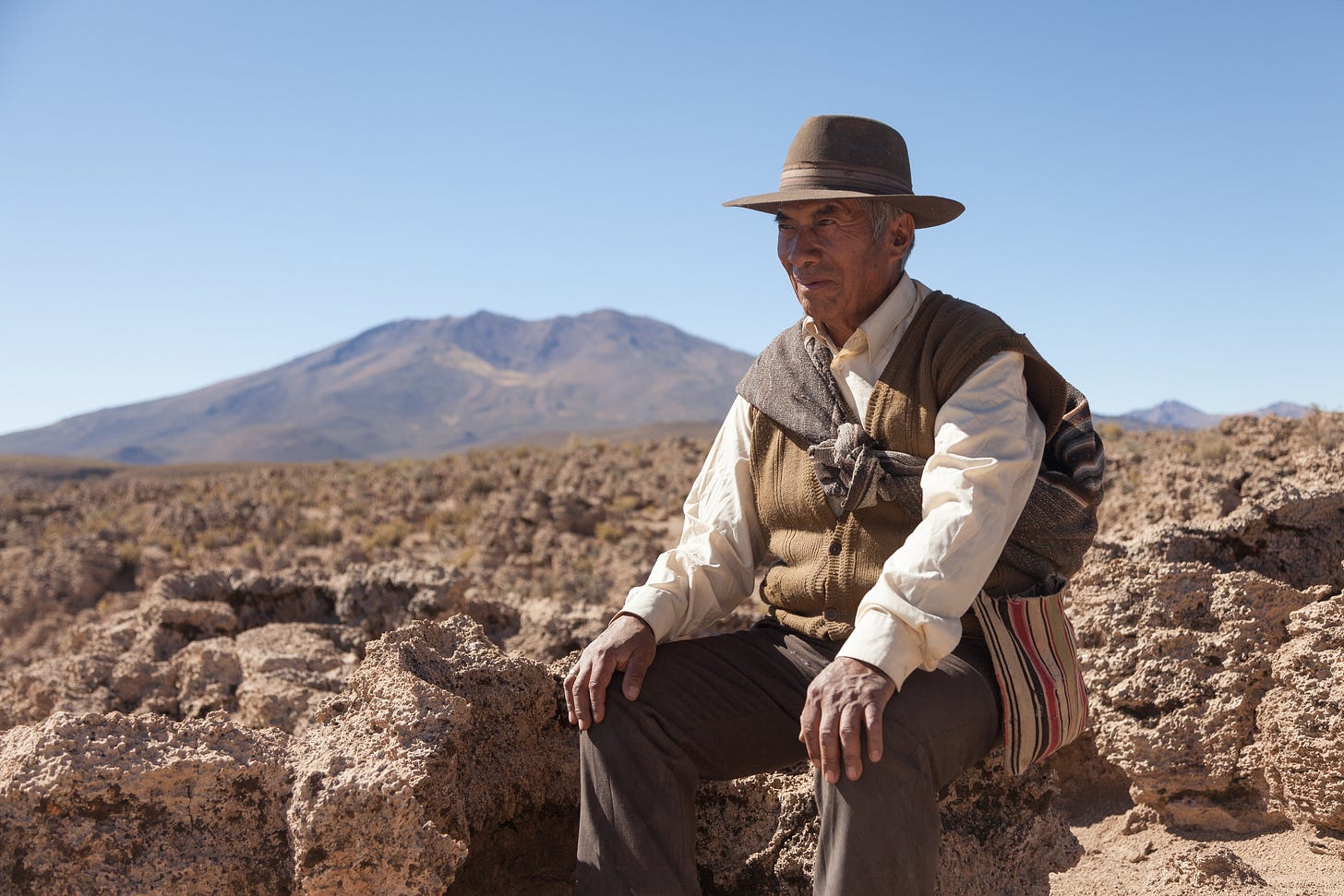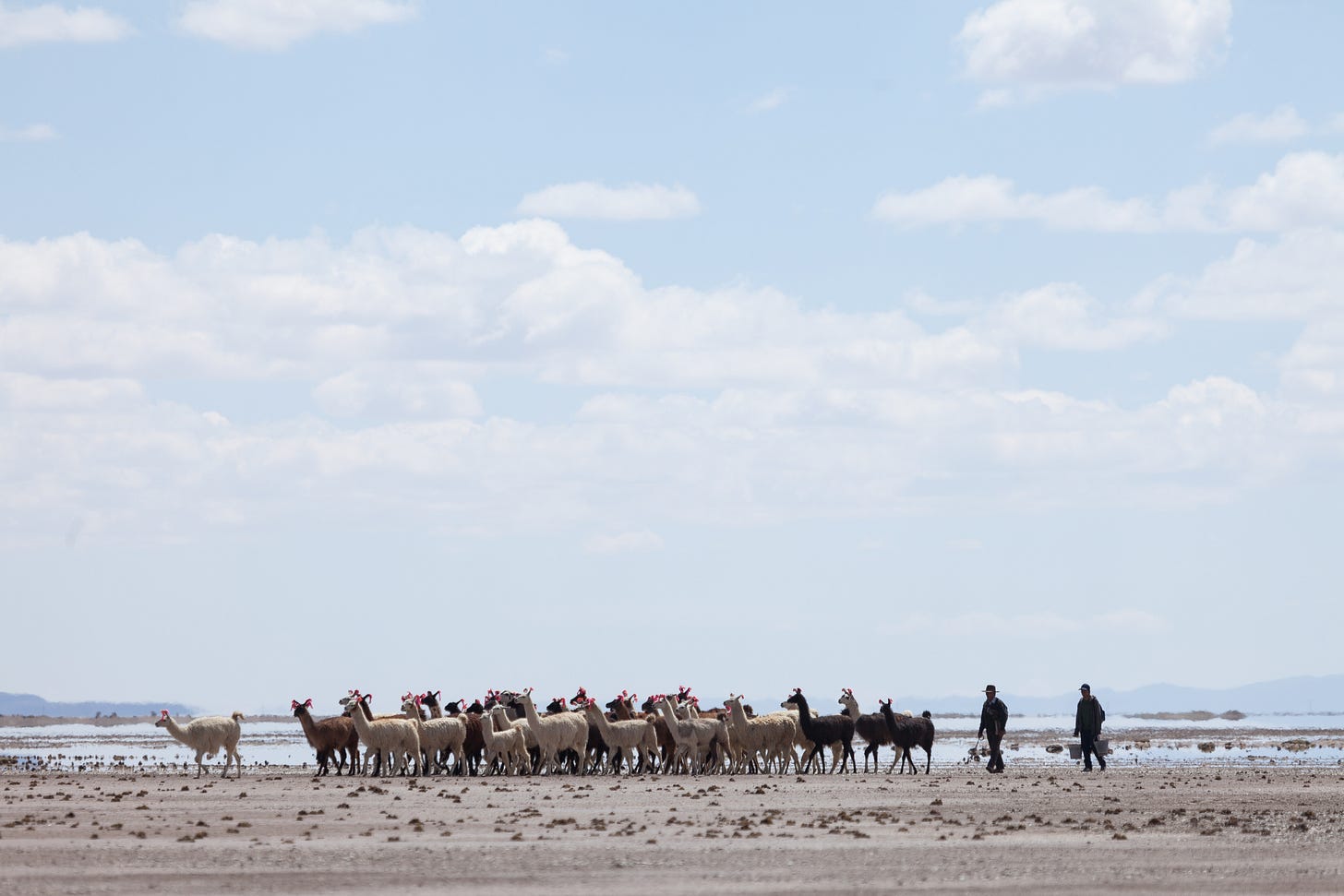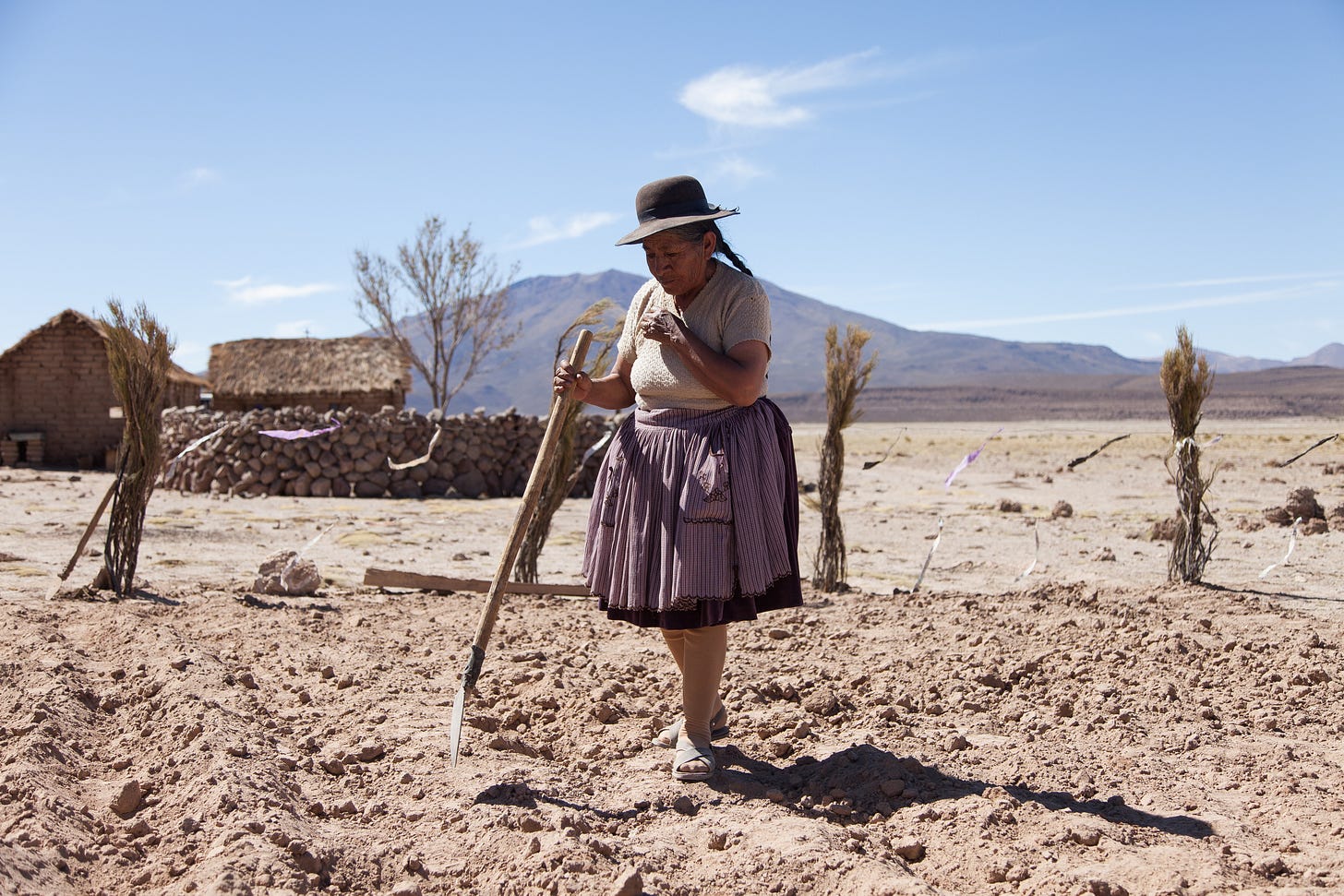Notes on Utama
By Sergio C. Muñoz at Intelatin
Virginio is the protagonist of Utama and he has a son that we never get to meet because he moved to the city. He has a grandson named Clever, a wife named Sisa and a herd of llamas. Clever has a child that will soon be born back in the city. So, underpinning the story is a story of four generations in this family.
It has to be assumed that since Virginio speaks Quechua that he lives in a traditional Quechua and/or Inca lifestyle. Let’s assume that he probably learned llama ranching and inherited his adobe and palm thatch home from his father. If the Incas arouse in the 14th century, it may be possible that these llama ranching traditions have been in-process for the last 600 years. This, according to Paulette Steeves, author of the Indigenous Paleolithic of the Western Hemisphere, is argubaly, a short estimate.
I asked Dr Steeves if the land had a perspective:
“For me, the land is a being and has a spirit, whether the land has its own perspective, well that would change for each Indigenous community. This is a question for each Indigenous community to answer regarding their traditional lands and worldviews.”
After being educated by Dr Steeves this year, my worldview changed dramatically. I began to consider the land, the mountains, the rivers, the harvests and obviously the animals as living elements in the lives of these humans. Like, how long has the Condor (that makes the greatest special appearance in the film) lived in the mountains of the western hemisphere?
With this perspective in-mind, when Clever comes to petition his grandparents to move to the city, we see the tension of the film build. Virginio has the intergenerational transfer of hundreds, perhaps thousands, of years of adapting to a life of incovenience tied to sacred belief systems of land, rain, mountains, rivers, harvests and animal kin … is he ready and capable, like his son to abandon these traditions?
Clever cannot tolerate how his grandparents are choosing to continue this inconvenient way of life. Clever attributes his grandfather’s dire illness to this way of life far from “science.” He is, thankfully, fully empathetic and more reasonable than his grandfather, but there must be a dramatic word in Quechua that applies to this decision to leave the land and adapt to modernity in the city. Virginio seems to detest his son, Clever’s father, for making that move and ending the tradition. Clever’s future son will likely never know what it is to know the personalities and behaviors of llamas. Or rivers, or mountains, or the land. He might live an entire life without ever seeing a condor.
It seems that urbanites watching Utama from a position of urban privilege may prefer proximity to a computer over a Condor but Virginio does not. He is what is referred to in Spanish as a necio. Worse yet, a tyrannical machista man who believes himself to be the patriarch … and a necio. In what is his most offensive foolishness in the film, it seems that he believes that his wife should die with him when he dies just because. It is easy to imagine him killing her to realize this nonsense. It is a foolishness that Clever’s empathy would never allow but nobody in the film sees fit to take in Sisa’s perspective. What is absolutely certain is that Sisa’s life is hard and Clever wants to make it easier and the only place for that, unfortunately, is in the city.
Upon reaching out to nation-state capitalist economists to better understand the correlation of convenience, life-span and economic well-being, it is certain that urban modernization has provided positive short term results in comparison to rural traditions. However, the true beauty of this film is in the premonition of what happens when the life-cycles get stalled and killed by the lack of rain. In this film, it is happening in the desert among the most vulnerable Indigenous communities but they are just the first to feel the doomsday. Soon it will happen to the urbanites as well it seems to say. There are only so many llamas capable of being sacrificed to the rain gods. I asked José Olivares, author of Tepoztlán’s Highway to Nowhere, for his opinion on this phenomenon, he said:
“Climate migration is an ever-growing phenomenon throughout the world. Drought and disasters are forcing working class and poor people from homes they’ve inhabited for generations. And we know where to point the finger: capitalists, continually seeking profit, are the most responsible for climate change. Recent studies have shown that the richest 1 percent of the population are responsible for more than twice as much carbon pollution as the poorest 3.1 billion people in the world. The solution is to fundamentally change the structure of society, so that the effects of climate change are reversed, leading to Indigenous and rural populations to live with dignity in their generational homes.”
#Utama #LatinAmerica #Bolivia #Quechua #Inca #Film #Cine #CinemaTropical



